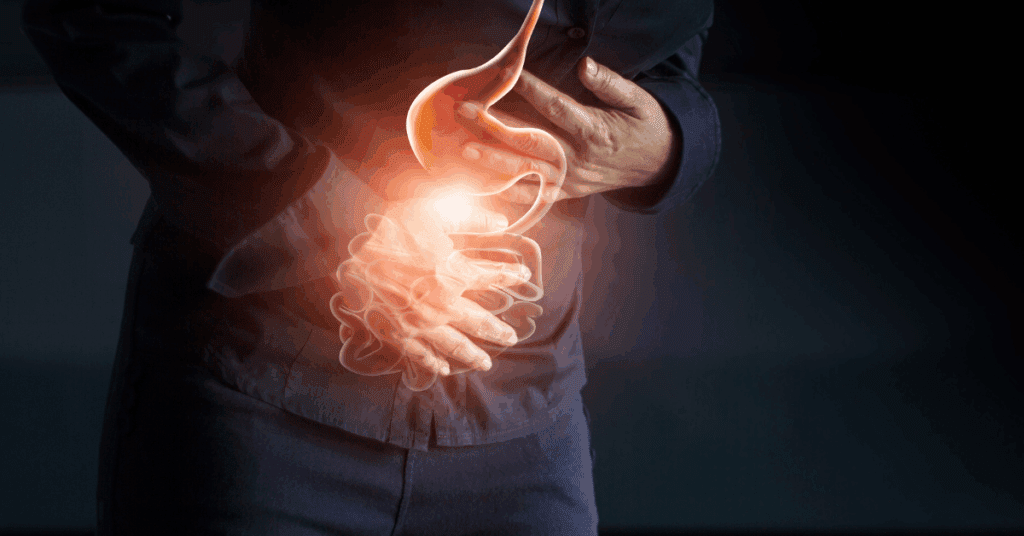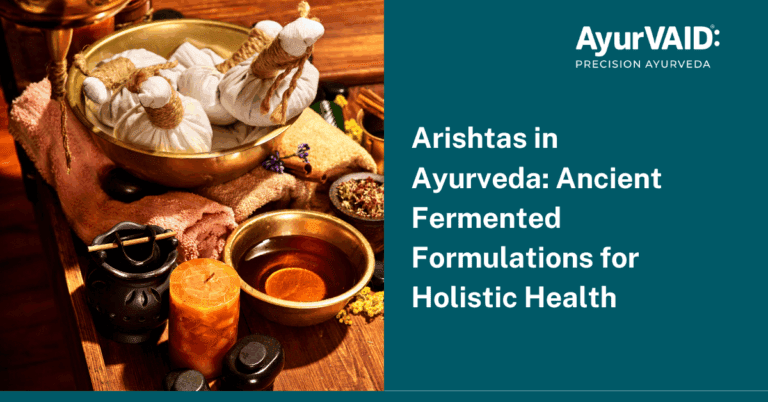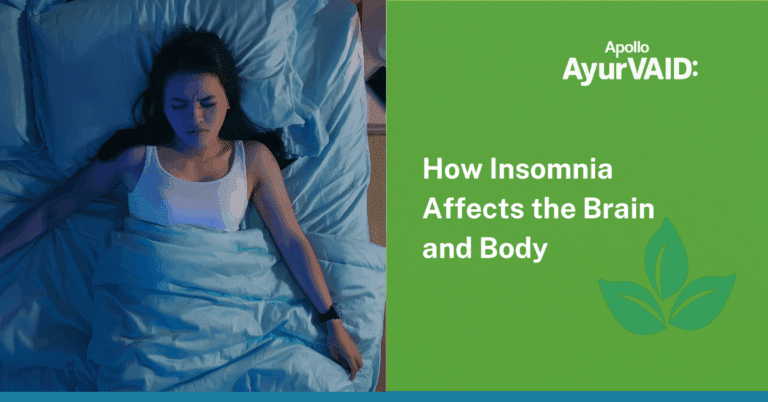Introduction
Living with ulcerative colitis (UC) requires more than prescription medicines — it asks for gentle daily choices that respect your digestion (agni), reduce internal toxins (ama), and soothe the inflamed colon. Diet will not cure UC, but a thoughtful ulcerative colitis diet plan can reduce pain, urgency and bloating, support mucosal healing, and restore confidence at mealtimes. Modern trials show diet affects symptoms and quality of life; Ayurveda wisdom gives us a practical framework: warm, well-cooked, unctuous foods that pacify Pitta and Vata while strengthening agni.
This blog offers an Ayurveda-based approach, evidence highlights, and a detailed 7 day meal plan for ulcerative colitis — easy to follow, culturally adaptable, and safe when coordinated with your medical team.

Ulcerative Colitis in Ayurveda
Ulcerative colitis is described in modern medicine as a chronic, immune-mediated inflammation of the colon that produces diarrhoea, rectal bleeding, tenesmus, mucus, and crampy pain. In classical Ayurveda terms, these presentations map onto conditions such as Pravahika and Raktatisara — the latter especially when persistent bleeding from colonic mucosal ulceration is prominent. Ayurveda sees Pittatisara (Pitta-provoked diarrhoea) as an early, heat-dominated stage that, when perpetuated by Pitta-aggravating foods and habits, may evolve into Raktatisara. Underlying these patterns is often a weak, impaired digestive fire, which allows undigested matter and dosha imbalance to accumulate and sustain the disease process. Hence,treatment must calm Pitta, support and rekindle Jatharagni (digestive fire), and remove the dietary and lifestyle drivers that convert episodic diarrhoea into Ulcerative Colitis (UC).
Key dietary principles
- Rest the gut during flares: small, frequent meals that are low-residue (low in mechanical fibre) reduce bowel frequency and irritation. Use this short-term — long-term strict low-residue restriction to mitigate nutrient gaps.
- Soothing, warm, and unctuous: warm gruels, well-cooked dals, and a teaspoon of ghee support agni and lubricate the channels (srotas), calming Pitta-related heat and Vata-related urgency. This is classical Ayurveda guidance and aligns with symptom relief reported in clinical practice.
- Target symptoms, not one single diet: short diet plans can reduce symptoms in patients with overlapping IBS features; reintroduce foods methodically. Research indicates that diet can help improve symptoms for some IBD (Inflammatory bowel disease) patients, but it doesn’t always affect inflammation levels.
- Anti-inflammatory pattern in remission: Plant-based, cooked foods with healthy fats such as ghee support remission and well-being; emerging studies associate this pattern with lower intestinal inflammation and better quality of life in UC (Ulcerative Colitis).
Use traditional herbs carefully: Certain herbs like Indian gooseberry and turmeric show promising anti-inflammatory and mucosal-protective effects. Use under a qualified Ayurveda doctor’s supervision.
What foods are good for ulcerative colitis?
Ayurveda rules of Pathya and Apathya are practical medicine: ‘pathya’ means warming, low-residue, easy-to-digest, unctuous, and astringent foods in small, frequent portions (think thin rice gruels, well-strained lentil soups, parched grain preparations, rice wash water, clarified butter and light milk derivatives, tender or well-cooked vegetables, and selected astringent banana preparations), while ‘apathya’ means raw, cold, bulky, hard-to-digest, overly spicy or fried foods, alcohol, and habitual ultra-processed items that mechanically or chemically irritate the colon. These dietary rules, framed in classical principles and are meant to reduce stool volume, calm Pitta–Vata provocation and give the mucosa a chance to heal. They must be translated into a personalised, nutritionally adequate plan and coordinated with your Physician for better results. Here are a few key food articles that should be included
- Rice, rice peya (kanji) — grounding, very low residue when prepared thin; excellent during flares.
- Well-cooked mung dal/khichdi—mung is gentle and protein-rich and traditionally recommended in Ayurveda. Studies suggest that mung components may support mucosal healing. Mash well to reduce mechanical irritation.
- Cooked, peeled vegetables such as carrots, bottle gourds, pumpkins, and peeled squash should all be thoroughly cooked and mashed.
- Ripe, peeled fruits — banana, stewed apple or pear (without skin)
- Plain curd (if tolerated) — small amounts of curd may help some patients.
- Ghee and small amounts of warm spices — cumin, coriander, and turmeric in moderation to aid digestion (caution with spice tolerance)
What are the worst foods for ulcerative colitis?
Ayurveda 7-day meal plan for ulcerative colitis
Portion sizes should be small to moderate; pay attention to your feelings of fullness and how your bowel responds. Use fresh, home-cooked ingredients; avoid deep frying and heavy sauces. If you tolerate eggs or fish, add a gently cooked poached egg or steamed fish for protein after a flare subsides.
Principle roadmap
- Flare/rest phase (first 1–3 days): aim for binding, low-residue, warm, well-cooked foods (e.g., thin rice gruels, well-cooked peeled vegetables, mashed legumes in small amounts) and avoid raw salads, whole nuts/seeds, high-fibre raw fruit, spicy/very oily foods. This reduces stool volume and mechanical irritation while supporting comfort and hydration.
- Gentle recovery (next few days): gradually add soft, easily digested proteins (well-cooked moong dal/legume soups, eggs, or small portions of tender fish if non-vegetarian), a little clarified butter/ghee for intestinal lubrication, and mild carminatives (very small amounts of crushed cumin/ginger) only if tolerated. Keep meals small and well-chewed.
- Remission/maintenance: Favour an overall anti-inflammatory whole-food pattern (plenty of cooked vegetables, moderate fruits, olive oil/ghee in moderation, well-cooked legumes, and whole grains introduced slowly if tolerated). Avoid habitual red and processed meats and highly processed/ultra-processed foods.
- Probiotics, fermented foods, and supplements – can help some patients, but the response is individual. Introduce cautiously; start with small portions of well-tolerated fermented items (diluted buttermilk, yoghurt) only after the acute flare eases.
Notes:
- Use 1 tsp ghee daily during flares to support mucosal lubrication; increase unctuousness if Vata symptoms (pain/urgency) predominate.
- Avoid raw salads, seeds, nuts, popcorn and whole legumes until fully recovered. Reintroduce fibre slowly.
Practical tips for everyday living
- Eat slowly, chew well, and have warm (not cold) meals — cold foods blunt agni and may create ama.
- Keep a simple food-symptom diary for 2–4 weeks; patterns often emerge.
- Coordinate probiotics, Triphala, turmeric or other herbs with your gastroenterologist and an Ayurveda physician. Evidence supports the benefit of some probiotic strains and suggests caution and supervision for herbal use.
Conclusion
Amla is more than a fruit; it’s a companion along life’s ups and downs, a little nudge from nature that longevity is all about care over time, patience, and balance. It teaches us that wellness can be simple, achievable, and personal. And in every bite, there is a connection between tradition and today, between your body and the world around you, between small choices and lasting vitality.






